Review for Parasyte The Maxim Collection 2
Introduction
If ever I had negative preconceptions about a title based on its name, it was Parasyte. While the dictionary definition of a parasite may be relatively prosaic, “an organism which lives in or on another organism (its host) and benefits by deriving nutrients at the other's expense”, the reality is uniformly disgusting, and given the imagery from the anime and the feature film that I encountered, my expectations were for a mindless body horror story. Nothing could be further from the truth when I finally saw the two live action feature films that Animatsu initially released. When they followed those up with the first half of the anime series, I was similarly impressed. The feature films told the story with the typical compression that you’d expect with a long running manga condensed into four hours. The anime has a lot less of that compression, taking a full 24 episodes to tell the story, and the differences alone made the first half of the anime worth looking at, even for fans of the films. Now that conclusion of the anime is here, I hope that it can maintain the standard set by the first half, if not actually improve. This time around, I get to see the anime on Blu-ray!
The question is posed, what would happen if the human population was reduced? We’re a species that over-populate the planet to the point that we use resources far quicker than they can be replenished, and we despoil the environment, effectively burning down the house while we’re still in it, with no other house to go to. Would reducing the human race cut down on pollution, save endangered species, restore the environment? It seems that someone or something has an answer, to put something else at the top of the food chain. The parasite that appears in the world is a particularly insidious predator, a bug that enters through the ear and invades the host’s brain, subsuming the personality and transforming the host body, using that body to feed... on humans.
Only something goes wrong when a parasite tries to take over student Shinichi Izumi, as he happens to be wearing headphones at the time, and the best that it can manage is invading Shinichi’s hand. Shinichi wakes to find that his hand is no longer his own, and it’s doing some really weird stuff. Groping girls boobs against his will is one thing, but stretching beyond comprehension , growing eyes, reading, watching TV, and eventually speaking is a little too much to handle. These parasites are here to devour humans, but it turns out that Migi, as he names his new hand, gets enough sustenance from Shinichi’s blood, and then having to coexist, they form more a symbiotic relationship than a parasitic one. Shinichi’s worldview begins to alter, while Migi gets a crash course in humanity, and turns out to be even smarter than his host. They’ll have to learn to work together, as the other parasites are smart too, and they quickly learn to move beyond serial killing and cannibalism to infiltration and global conquest. Shinichi and Migi might be the only two that can save the world.
Parasyte the Maxim Part 2’s twelve episodes are presented across 2 Blu-ray discs from Animatsu.
Disc 1
13. Hello Sadness
14. The Selfish Gene
15. Something Wicked This Way Comes
16. Happy Family
17. The Adventure of the Dying Detective
18. More Than Human
19. In Cold Blood
20. Crime and Punishment
21. Sex and Spirit
Disc 2
22. Repose and Awakening
23. Life and Vows
24. Parasitic Beasts
Picture
Parasyte the Maxim gets a 1.78:1 widescreen 1080p transfer on these discs. The image is clear throughout, with no significant signs of compression, and only the lightest of digital banding. Studio Madhouse do the honours with the animation, and offer more realistic character designs, strikingly detailed world designs, and strong, fluid animation. The anime also allows for far greater imagination and sheer grotesque imagery when it comes to the body horror the parasites inflict. In that respect, this anime is at a wholly different level than the live action feature. Some of that might be down to the budget constraints of accomplishing such effects in live action, that the anime is less limited by, but some of it surely is that added layer of abstraction that the 2D animated medium allows for, a greater suspension of disbelief, resulting in stunning scenes in the anime, that would look patently daft in live action. Sure enough for a recent animation, Parasyte looks stunning on Blu-ray. Sentai’s DVDs give good results, splitting the episodes across three discs, but even still the added resolution of Blu-ray brings out detail, colour and clarity that they just can’t compete with.
The images in this review were kindly supplied by Animatsu.
Sound
You have three options from the main menu of each disc, DTS-HD MA 5.1 Surround English with a signs only track, DTS-HD MA 5.1 Surround English with HOH English subs, and DTS-HD MA 2.0 Stereo Japanese with a translated English subtitle track. As you can guess from that sentence, even the audio and subtitles on these discs is locked during playback. I went with the Japanese, and was very happy with the experience, the actors suited their roles, and the subtitles were accurately timed and free of typos. The action comes across well, and I love the music (except the autotune hell of the opening theme). The incidental music can slip into 80s electronica at times, a hint of Vangelis and Jean Michel Jarre that really strikes a chord with me, and isn’t often heard in anime. I gave the dub a try, and while I remain unconvinced by the English dub performances, I must say that the surround audio really does open up the action a lot more.
Extras
The discs present their content with animated menus
Disc 1 autoplays with a trailer for Akame ga Kill.
Disc 2 has the textless credits, and further Sentai trailers for Akame ga Kill, Chaika the Coffin Princess, When They Cry, and The Fruit of Grisaia.
Conclusion
I spent much of my review for Part 1 of Parasyte the Maxim comparing it to the movies that Animatsu released just prior to the anime, and I could do the same here. If you have bought the movies, and they are worth picking up, then you’ll be interested to know that as the anime comes to its conclusion, it mirrors the movie storyline more closely, or perhaps its more accurate to say that both the movie and the anime stick closer to the original manga. There is an additional character here and there, the odd change in setting, but in terms of the story, the way it is paced, there are fewer differences.
That isn’t really a problem, as both the movie and the anime adapted a finished manga (as opposed to ongoing manga as usually happens, where both movie and anime have to create an ending of their own), and in terms of live action, Parasyte isn’t a story that will break the bank when it comes to production design and location budget. The story is excellent, and both the movie and the anime adhere to the story well enough to do it justice, while both are dissimilar enough so that neither feels redundant. This is one story that is worth having in both versions.
The thing I like most about the anime is that it has the additional space and time to really develop the characters, get into Shinichi and Migi’s respective mindsets as the way they perceive the world is altered by their shared experiences. As the second half of the series begins, Shinichi’s having issues of isolation and emotional detachment following the losses that he has thus far suffered, most recently that of his classmate. At the same time, Reiko Tamura (who as Ryoko Tamiya was briefly Shinichi’s teacher) is also on a journey of self-discovery. She’s the parasite that likes to experiment, only her experiment with motherhood is having unexpected consequences. Shinichi’s a unique case, a symbiosis between parasite and human, rather than a complete take-over, and that is an experiment that Reiko wants preserved, despite the other parasites seeing Shinichi and Migi as a threat. Given that Migi can sense other parasites, she begins by hiring a human private investigator to keep an eye on Shinichi, but when the other parasites finally turn on Reiko, it sets them down a self-destructive path. Although once again it’s Reiko’s evolution that frees Shinichi from the prison he’s created for his heart, and finally allows him to grieve, to touch his humanity again.
Things proceed in much the same way as the movies, the police cottoning on to the parasite threat, devising countermeasures, including a serial killer who can tell the infested and the humans apart, the showdown at city hall, although Shinichi is more closely involved this time, and the sole parasite survivor Goto, Reiko’s experiment gone wrong, having to be dealt with by Shinichi. The setting and location for the showdown is different, and Shinichi finds an interesting sanctuary before the climax, but when it comes to the story’s epilogue, both the film and the anime are nigh on identical.
There are things I prefer about the movies, the concise narrative, the consistently darker tone, but the anime does the character development a lot better, it has the space to really develop the story, and I do prefer the anime’s climax, which feels original, as opposed to the Terminator 2-esque conclusion of the second film. The anime does misstep here and there. Some of the characters are hard done by, particularly Shinichi’s father, who following the City Hall incident unceremoniously exits the story, never to be mentioned or referenced again (you can see why the films left him out completely), while the other symbiotic character Mamoru Uda has far less of a role in the second half as he might have, given his similarities to Shinichi.
Parasyte is an anime well worth investing some time in. The 20-year retro rule means that the 90s are under scrutiny now, and as an adaptation of a 90s manga, updated for modern audiences, Parasyte has the dual benefit of feeling quintessentially of its time, and also being original to the anime medium. It’s also comparatively rare in anime in having a strong, and thought provoking message, with its Nietzchean premise really speaking to mankind’s place in the world, our duty of care to the planet, and the idea that if we fail in that duty, the planet will react accordingly. The DVDs from Sentai via Animatsu were good, but unsurprisingly the Blu-rays are better. Just like part 1, you can get Part 2 in standard DVD and Blu-ray form, as well as Deluxe Collector’s Edition Blu-ray.
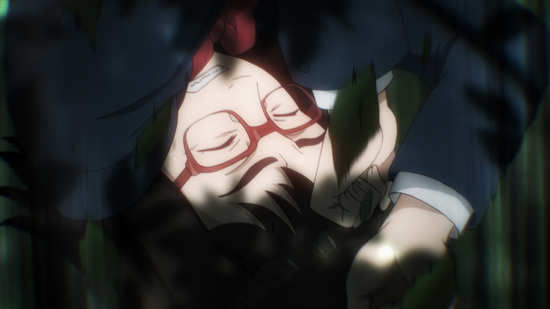
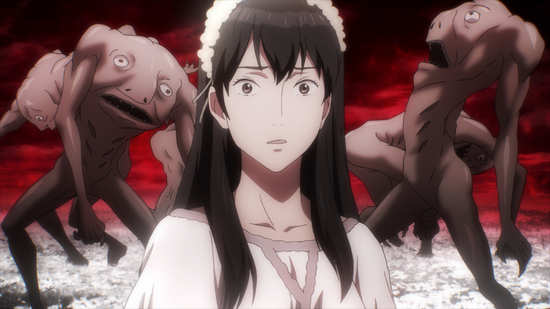
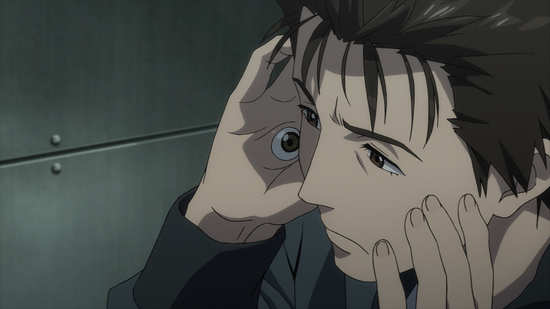
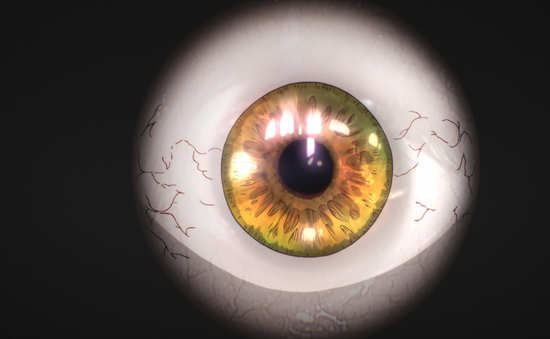
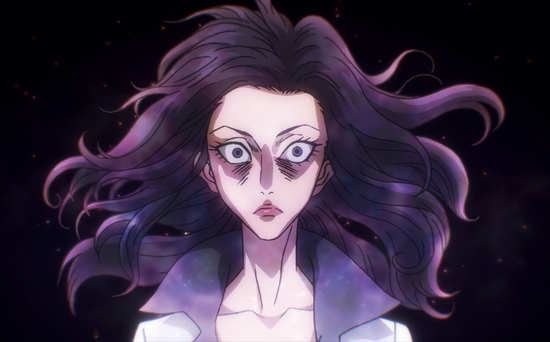
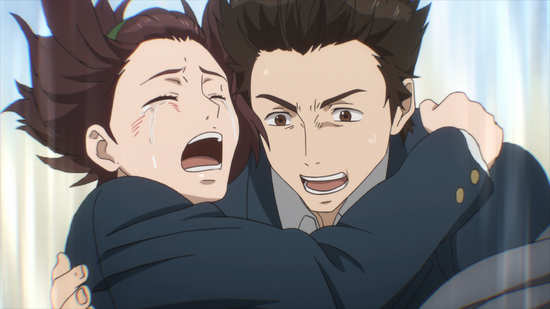
Your Opinions and Comments
Be the first to post a comment!